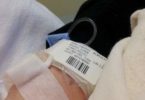Body dysmorphic disorder (BDD), is a mental illness in which you can’t stop thinking about a flaw in your appearance, a flaw that is either minor or imagined. But to you, your appearance seems so shameful that you don’t want to be seen by anyone. It’s estimated that up to one in every 100 people in the UK may have BDD, although this may be an underestimate as people with the condition often hide it from others. BDD has been found to affect similar numbers of males and females.
The condition can affect all age groups, but usually starts when a person is a teenager or a young adult, when people are generally most sensitive about their appearance.
It’s more common in people with a history of depression or social phobia. It often occurs alongside obsessive compulsive disorder (OCD) or generalised anxiety disorder, and may also exist alongside an eating disorder, such as anorexia or bulimia.
Causes
The exact cause of BDD is not known. One theory suggests the disorder involves a problem with certain neurotransmitters in the brain. Neurotransmitters are chemicals that help nerve cells in the brain send messages to each other. The fact that BDD often occurs in people with other mental health disorders, such as major depression and anxiety, further supports a biological basis for the disorder.
- Brain differences. Abnormalities in brain structure or neurochemistry may play a role in causing body dysmorphic disorder.
- Genes. Some studies show that body dysmorphic disorder is more common in people whose biological family members also have the condition, indicating that there may be at least one gene associated with this disorder.
- Environment. Your environment, life experiences and culture may contribute to body dysmorphic disorder, especially if they involve negative experiences about your body or self-image.
Symptoms
- Engaging in repetitive and time-consuming behaviors, such as looking in a mirror, picking at the skin, and trying to hide or cover up the perceived defect
- Constantly asking for reassurance that the defect is not visible or too obvious
- Repeatedly measuring or touching the perceived defect
- Experiencing problems at work or school, or in relationships due to the inability to stop focusing about the perceived defect
- Feeling self-conscious and not wanting to go out in public, or feeling anxious when around other people
- Repeatedly consulting with medical specialists, such as plastic surgeons or dermatologists, to find ways to improve his or her appearance
- Psychotherapy. This is a type of individual counseling that focuses on changing the thinking (cognitive therapy) and behavior (behavioral therapy) of a person with body dysmorphic disorder. The goal is to correct the false belief about the defect and to minimize the compulsive behavior.
- Medication. Certain antidepressant medications called selective serotonin reuptake inhibitors (SSRIs) are showing promise in treating body dysmorphic disorder.
- Group and/or family therapy. Family support is very important to treatment success. It is important that family members understand body dysmorphic disorder and learn to recognize its signs and symptoms.





